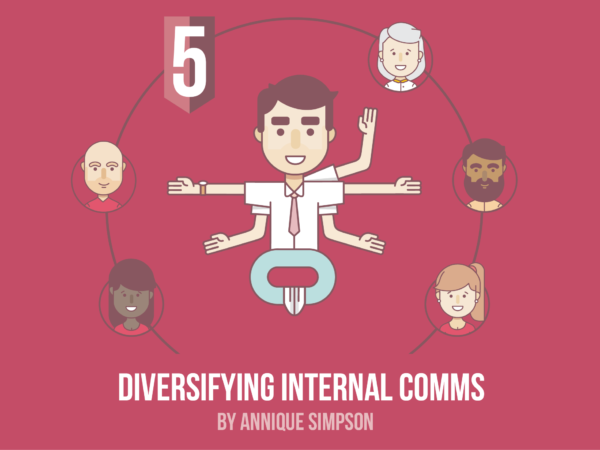
Do you ever find yourself stuck on the IC hamster wheel, unable to escape an endless cycle of tactical delivery at the expense of focusing on the bigger picture? Comms expert Katie Marlow joins us for this eye-opening blog, exploring why you need to put internal communications strategy front-and-centre…
“We’re all so busy”. It’s a constant refrain from communicators and just about everyone these days.
Organisations of all shapes and sizes are working hard to adapt to ever changing business environments. That means pressure on the communication teams.
We provide the compelling content, and attractive and useful channels and platforms for that content, to promote, inform, engage, and enable collaboration across the business. There’s a lot going on, always.
Many in-house teams are so busy delivering that they rarely get the space to stop and think about the bigger picture. But that means internal communications strategy, and providing the evidence, are frequently left wanting.
So how do we know that what we’re so busy doing is making a difference?
Why you should focus on internal communications strategy
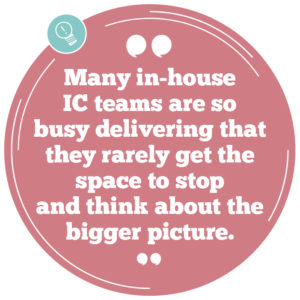
Unless we take the time to stop and consider the evidence and internal communications strategy, we’ll be stuck on that hamster wheel, in a cycle of tactical delivery and wondering where we’re showing value. And value is what we really need to be focused on.
There’s a growing pressure for good talent for good jobs. As individuals we need to be delivering our best work to ensure we stay relevant and in demand, and help our organisations.
Against that backdrop there is a levelling of budgets which have remained static in recent years. We’re all finding ways to get creative on reduced funds, and more generally to do more with less.
Then there’s AI. Jobs such as auditing, forecasting, analysis and more will likely be carried out efficiently by machine intelligence in the next five years. Even some copywriting is already easily completed by AI.
Making internal communications fit for the future
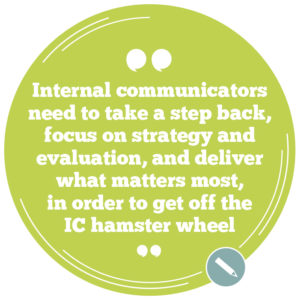
So as communicators, we need to provide and build on the parts of our expertise that can’t be assimilated by automation and machine intelligence. We need to take a step back, focus on strategy and evaluation, and deliver what matters most to get off the hamster wheel.
Then we can be ready to harness the power of AI, using the tools intelligently to do the jobs it can while we focus our energy on our human strengths – which AI can’t emulate.
“I really believe we’re sleepwalking into this. We could find possibly a third, maybe a half of our industry could be wiped out by automation.” — Sarah Hall, President of the CIPR.
So where do we start?
4 areas to make an impact with internal communications strategy
I believe there are four areas that can help us to get focused on making an impact with internal communications strategy.
First, we need to address our own ways of working, and our perception of being ‘busy’.
1. Ourselves
Before we can tackle the mounting pressures of work, we first need to stop and think about the ways we work and how we can take back some control over it.
Take time to think about where you can have the most impact and shift your way of working, and therefore also how your business leaders view and evaluate your work.
There are many resources with good advice to help you. A brilliant read is Busy by Tony Crabbe. He talks about some sound principles that can help us in our work:
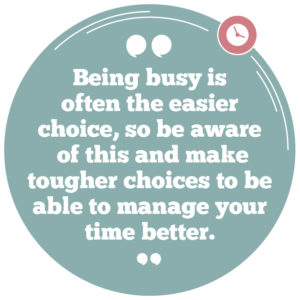
- Time management doesn’t help you take control or manage more
- Shift from control to mastery – focus on the outputs you choose to create
- Busy is often the easier choice, so be aware of this and make tougher choices to be able to manage better
- Focus – do one thing at a time. Switching tasks takes more time and is less productive. Work deeply and in bigger chunks of time and give yourself time to refresh and recharge in between those big chunks of work
- Build-in compromise and find creative solutions to meet your needs and those of the people who require your time
- Learn to say ‘no’.
There are many more useful tips in the book if you’re interested in understanding some more practical ways to manage your own sense of busyness.
2. Business knowledge
When you have good business knowledge, it allows you to shift your focus to outcomes, gives you influence and earns you respect. It also allows you to deliver better-crafted and planned communication.
All of which helps you to protect your role and adapt for the future.
Some top tips to help you boost your business knowledge:
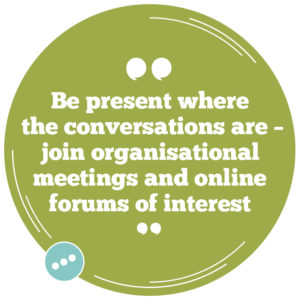
- Befriend those in the know – use your internal network, learn from them and work with them where you can
- Be present where the conversations are – join the meetings and online forums of interest
- Learn from outside your organisation – go to events, read widely and consider different perspectives
- Share what you know – to guide your work and share with your internal network to demonstrate your knowledge
- Don’t disappear – there’s so much out there, too much at times, so use curated lists and reliable sources and perhaps share the knowledge gathering with others in your team or your network
- Use the knowledge to help you prioritise, push back where you need to say no, build influence and create tailored content.
3. Understanding and engaging stakeholders
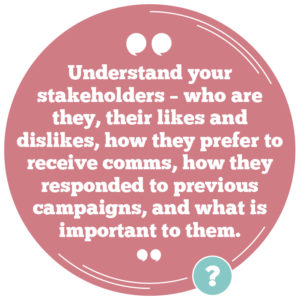
- Identify who they are – use data and mapping that already exists to draw out groups and personas, allowing you to segment by different variants
- Understand them – who are they, what they like and dislike, how they like to receive information, how they responded to previous campaigns, and what is important to them
- Prioritise them – so you can focus on the groups where you need to make a biggest impact
- Engage and involve stakeholders – they have so much knowledge to help you
- Use surveys, focus groups, interviews, comments and threads and organisational data to help you understand them, prioritise, engage and involve them.
4. Measurement and evaluation
- Measure what matters for both outcomes and outputs – make measurement meaningful and useful
- Think differently by moving from managing channels and activity to managing systems and results, and from a cost centre to a function which creates value
- Start small so measurement is not so overwhelming – identify an opportunity to demonstrate your value where you can show real improvement and use it to showcase your success
- Use business measures to track your communication efforts alongside to demonstrate your impact
- Define your communication measures – there are many options, keep it focused for your organisation and work
- Build up your measurement when you’re ready and use it to help the business and your planning. Report clearly so you become a trusted source of expert knowledge.
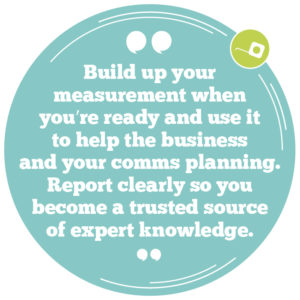
Unless we take charge of our work, we’ll be forever on that hamster wheel and at risk of being in the one third of the industry whose work is completed by AI.
Build your confidence, show the evidence and be bold. Focus on your internal communications strategy, what matters most, and explain why. It takes time and dedication, but it pays off.
Start by making some small steps and changes in your work, see the difference it makes, and build on it.
Meet the author

Katie Marlow
I am a chartered and award-winning communication specialist with nearly 20 years’ experience under my belt. My speciality is internal communications, where I take on an inside-out view of communication to help organisations work better for success. I love uncovering complexities in organisational communication and understanding the different dynamics that can be found between leaders and employees in the workplace, then designing simple and creative solutions for a variety of challenges. I work in partnership with The Employee Benefits Collective and Perry Timms HR among others to provide comms expertise and insight alongside their business services. I also lead and teach the CIPR Internal Communication Diploma at Bournemouth University.





